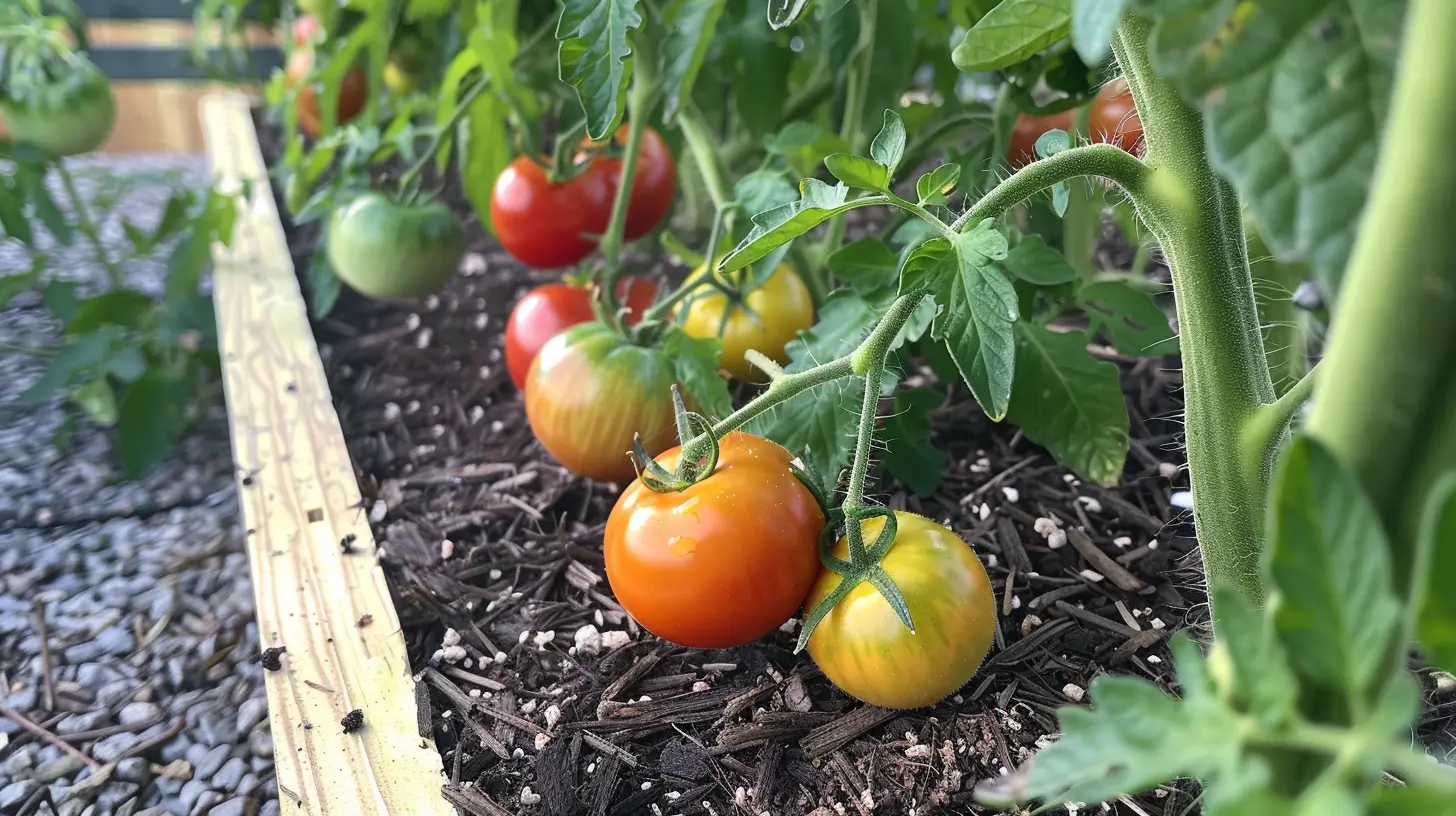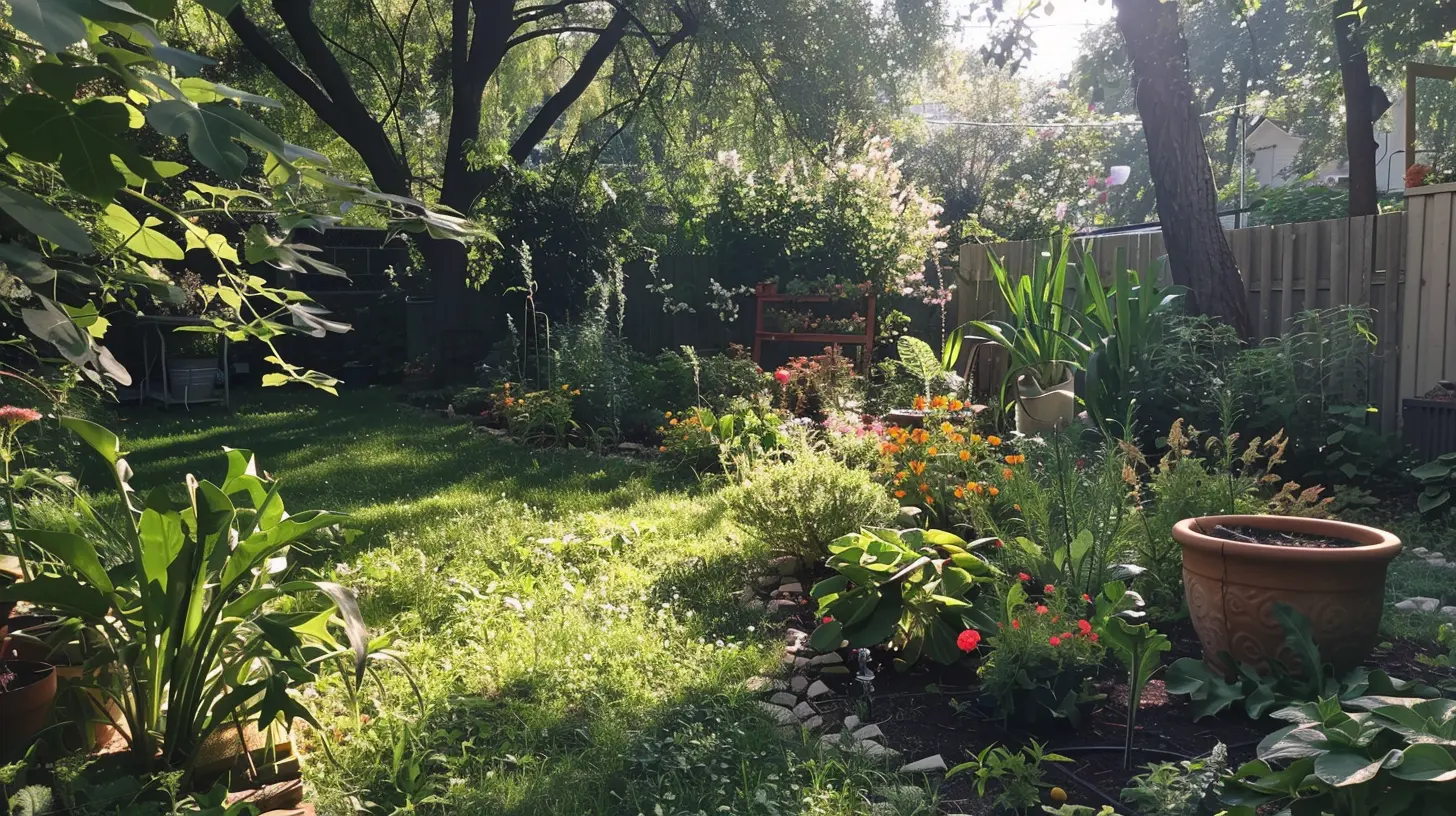
The location of your garden plays a pivotal role in the success of your vegetable growing endeavors. Vegetables thrive in areas that receive at least six to eight hours of sunlight daily. Observe your potential garden space throughout the day to identify the sunniest spots. Additionally, consider the proximity to a water source and the quality of drainage in the area. Your garden’s location should offer easy access for watering while ensuring that excess water can drain away without waterlogging the plants. A well-chosen spot is the cornerstone of a productive vegetable garden.

| Season | Optimal Conditions | Vegetables |
|---|---|---|
| Spring | Cool, Moist | Lettuce, Spinach, Peas, Radishes |
| Spring | Moderate Sunlight | Kale, Swiss Chard, Carrots, Beets |
| Summer | Full Sun | Tomatoes, Peppers, Cucumbers, Eggplants |
| Summer | Moderate Water | Zucchini, Squash, Corn, Beans |
| Fall | Cooling Temperatures | Broccoli, Cauliflower, Brussels Sprouts, Pumpkins |
| Fall | Less Sunlight | Leeks, Turnips, Parsnips, Garlic |
| Winter | Greenhouse/Grow Lights | Microgreens, Winter Lettuce, Spinach, Kale |
| Winter | Indoor Gardening | Herbs, Indoor Tomatoes, Indoor Peppers, Sprouts |
Soil is the foundation of your garden’s health and the key to growing nutritious and vibrant vegetables. Starting a vegetable garden with rich, well-draining soil sets your plants up for success. Begin by testing your soil’s pH to understand its acidity or alkalinity, which influences nutrient availability to plants. Most vegetables prefer a pH range of 6.0 to 7.0. Enhance your soil with organic matter like compost or well-rotted manure to improve its texture, fertility, and water-holding capacity. Tilling the soil to a depth of about 12 inches (30 cm) helps aerate it and incorporate the organic matter thoroughly.
| Optimal pH Level | Vegetables |
|---|---|
| 4.5 – 5.5 | Blueberries (technically a fruit) |
| 5.5 – 6.0 | Potatoes, Parsley, Sweet Potatoes, Parsnips |
| 6.0 – 6.5 | Beans, Carrots, Cucumbers, Garlic, Peas, Pumpkins, Spinach, Squash, Broccoli, Cauliflower, Corn, Onions, Peppers |
| 6.5 – 7.0 | Lettuce, Beets, Celery, Kale, Tomatoes, Radishes, Turnips, Asparagus, Cabbage, Brussels Sprouts |
| 7.0 – 7.5 | (Most vegetables prefer a pH <7.0, but some can tolerate up to 7.5) |
| Above 7.5 | (Few vegetables prefer alkaline soil; consider lowering pH for vegetable gardens) |
Notes:
| Soil Type | Vegetables |
|---|---|
| Sandy | Carrots, Radishes, Potatoes, Lettuce |
| Loamy | Tomatoes, Cucumbers, Peppers, Beans |
| Clay | Broccoli, Cauliflower, Sunflowers, Chard |
| Silt | Asparagus, Zucchini, Pumpkins, Squash |
| Peaty | Cabbage, Celery, Cranberries, Blueberries |
Sandy soil has a gritty texture and is made up of large particles of weathered rock, mainly quartz. It’s light in color, drains well, and warms up quickly in the spring. However, it often lacks nutrients because water drains through it so easily, washing away soluble nutrients.
Clay soil consists of very small, fine particles that stick together, creating a heavy, dense soil. It can hold a lot of nutrients but doesn’t drain well, leading to waterlogging. When wet, it’s sticky and pliable, but it can dry out to a hard, solid mass. Its color can vary from red to yellow to gray, depending on the mineral content.
Silt soil has a smooth, flour-like texture and is made up of medium-sized particles compared to sand and clay. It holds moisture better than sandy soil but drains more effectively than clay soil. It’s typically fertile and good for farming. Silt soil is often found near rivers and can appear in colors ranging from gray to blue to black.
Peaty soil is dark brown or black in color, rich in organic matter, and usually found in cooler, wet regions. It’s spongy to the touch and can hold a lot of water, making it highly acidic and low in nutrients. However, when properly drained and fertilized, it can be highly productive for certain crops.
Loamy soil is considered ideal for gardening and agriculture because it has a balanced mix of sand, silt, and clay, along with organic matter. It has a crumbly texture, drains well, retains moisture, and is rich in nutrients. The color of loamy soil can vary but is often dark brown, indicating a high organic matter content.
Chalky soil contains a large amount of chalk or limestone, leading to a stony texture. It’s usually alkaline, which can limit the availability of iron and magnesium for plants. Chalky soil is often light in color and may require amendments to support a wider range of plant life.
| Vegetable | Tropical | Subtropical | Temperate | Cool/Mountain |
|---|---|---|---|---|
| Beans | Feb, Mar, Apr, Sep, Oct, Nov | Jan, Feb, Sep, Oct, Nov | Jan, Feb, Oct, Nov | |
| Beetroot | Mar, Apr, Jul, Aug | Feb, Mar, Apr, Jun, Jul, Aug, Sep | Feb, Mar, Apr, Jul, Aug | Feb, Mar, Aug, Sep |
| Broccoli | Feb, Mar, Apr, Jul, Aug | Feb, Mar, Apr, Jul, Aug | Feb, Mar, Apr, Jul, Aug, Sep | Feb, Mar, Jul, Aug |
| Cabbage | Feb, Mar, Apr, May, Aug, Sep | Feb, Mar, Apr, May, Jul, Aug | Feb, Mar, Apr, Jul, Aug | Feb, Mar, Jul, Aug |
| Carrot | Jan, Feb, Mar, Apr, May, Jun, Aug, Sep, Oct, Nov | Feb, Mar, Apr, May, Jul, Aug, Sep, Oct, Nov | Jan, Feb, Mar, Apr, Jul, Aug | Jan, Feb, Mar, Apr, Aug, Sep |
| Cucumber | Feb, Mar, Apr, Sep | Feb, Mar, Apr, Aug, Sep | Sep, Oct, Nov | Oct, Nov |
| Lettuce | Feb, Mar, Apr, May, Aug, Sep | Feb, Mar, Apr, May | Feb, Mar, Apr, May, Aug, Sep | Feb, Mar, Aug, Sep |
| Peas | Feb, Mar, Aug, Sep | Mar, Apr, Jul, Aug | May, Jun, Jul | May, Jun, Jul |
| Potato | Feb, Mar, Jul, Aug | Aug, Sep, Oct, Nov | Sep, Oct | |
| Tomato | Jan, Feb, Mar, Apr, Jul, Aug | Aug, Sep, Oct, Nov, Dec | Sep, Oct, Nov |
This table allows you to see at a glance the best times to sow different vegetables depending on the climate zone in Australia, aiding in planning your gardening activities for optimal growth and yield.
| Vegetable | Tropical | Subtropical | Temperate | Cool/Mountain |
|---|---|---|---|---|
| Beans | Jan, Apr, May, Jun, Nov, Dec | Jan, Mar, Apr, Nov, Dec | Jan, Mar, Apr, Dec | |
| Beetroot | Jun, Jul, Oct, Nov | May, Jun, Jul, Sep, Oct, Nov, Dec | May, Jun, Jul, Oct, Nov | May, Jun, Nov, Dec |
| Broccoli | May, Jun, Jul, Oct, Nov | May, Jun, Jul, Oct, Nov | May, Jun, Jul, Oct, Nov, Dec | May, Jun, Oct, Nov |
| Cabbage | May, Jun, Jul, Aug, Nov, Dec | May, Jun, Jul, Aug, Oct, Nov | May, Jun, Jul, Oct, Nov | May, Jun, Oct, Nov |
| Carrot | Jan-Feb, Mar-Apr, May-Jun, Jul-Aug, Sep-Oct, Nov-Dec | Jan, Feb, May, Jun, Jul, Aug, Oct, Nov, Dec | Apr, May, Jun, Jul, Oct, Nov | Apr, May, Jun, Jul, Nov, Dec |
| Cucumber | Apr, May, Jun, Nov | Apr, May, Jun, Oct, Nov | Jan, Nov, Dec | Jan, Dec |
| Lettuce | Apr, May, Jun, Jul, Oct, Nov | Apr, May, Jun, Jul | Apr, May, Jun, Jul, Oct, Nov | Apr, May, Oct, Nov |
| Peas | May, Jun, Nov, Dec | Jun, Jul, Oct, Nov | Aug, Sep, Oct | Aug, Sep, Oct |
| Potato | Jun, Jul, Nov, Dec | Jan, Feb, Mar, Dec | Jan, Feb | |
| Tomato | Apr, May, Jun, Jul, Oct, Nov | Jan, Feb, Mar, Nov, Dec | Jan, Feb, Dec |
This table provides a general guideline for when each vegetable might be ready to harvest, based on the climate in which it’s grown in Australia.